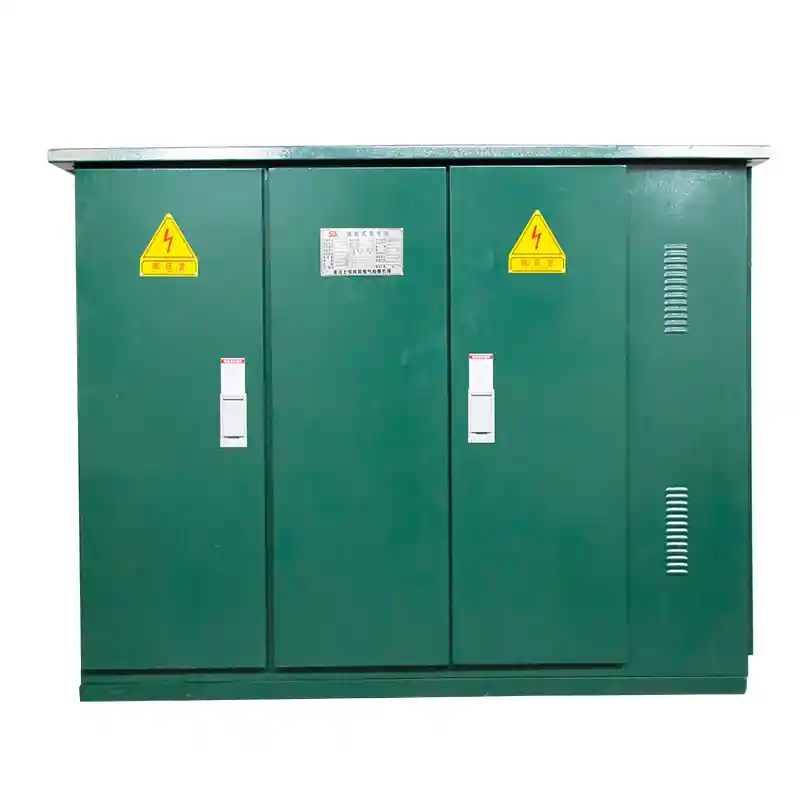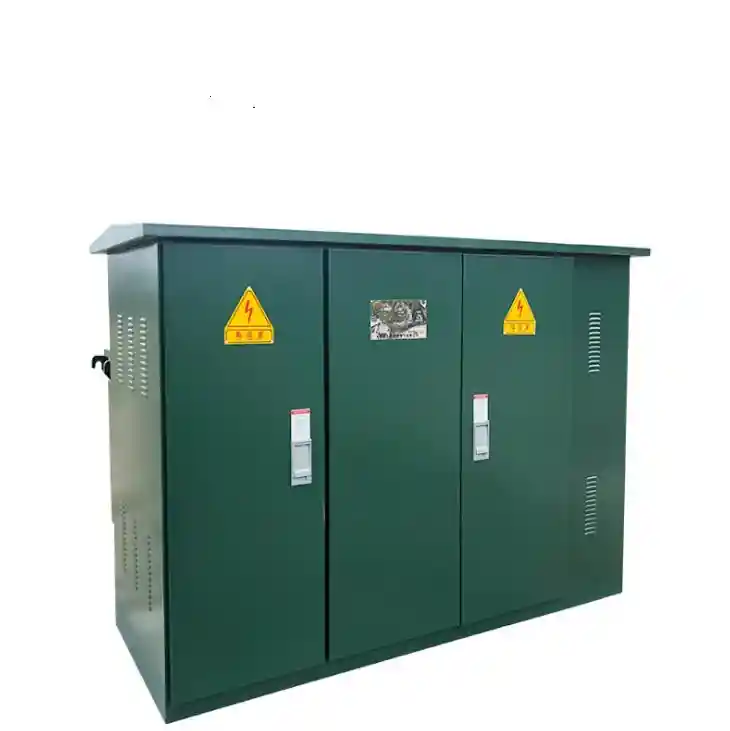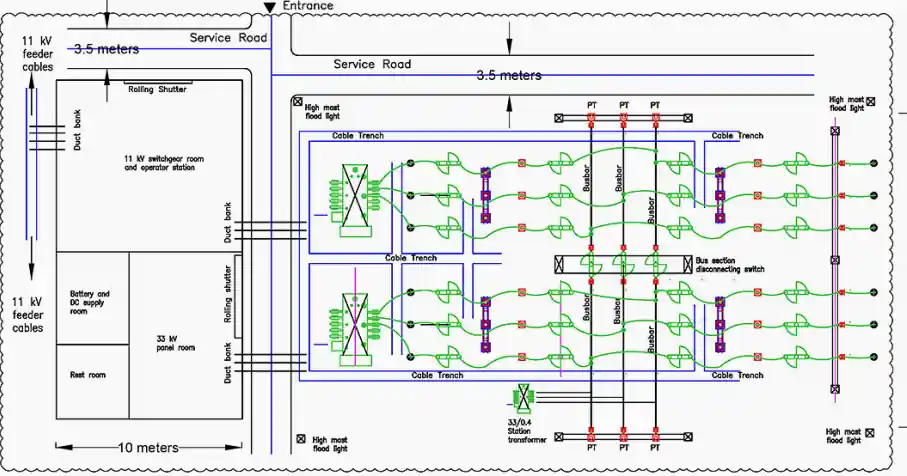- Qu'est-ce qu'un poste compact de 33kV ?
- Applications des postes compacts 33kV
- Contexte de l'industrie et tendances du marché
- Spécifications techniques - Configuration typique d'un poste compact de 33kV
- Comparaison avec les postes conventionnels
- Conseils d'achat et de sélection
- Références autorisées
- Foire aux questions (FAQ)
Alors que les besoins en électricité augmentent dans les paysages industriels et urbains, la sous-station compacte de 33 kV s'est imposée comme une solution fiable et peu encombrante. Conçue pour gérer la distribution de moyenne à haute tension en toute sécurité et avec un encombrement minimal, cette unité préfabriquée intègre de multiples composants (appareillage de commutation haute tension, alimentation, etc. Guide du transformateuret le panneau de distribution basse tension - dans un boîtier étanche.

Qu'est-ce qu'un poste compact de 33kV ?
Un poste compact de 33kV, également appelé poste de conditionnement ou poste kiosque, est une unité électrique modulaire qui abaisse la tension de 33kV à des niveaux utilisables tels que 11kV ou 0,4kV. Il comprend :
- Appareils de commutation HT (comme une unité principale en anneau) pour l'entrée dans le réseau
- Transformateur de puissanceà bain d'huile ou à sec, pour la conversion de tension
- Tableau de distribution BT pour la distribution finale de l'énergie et la protection des circuits
Cette conception autonome réduit le temps d'installation, améliore la sécurité et garantit la compatibilité avec les systèmes de réseaux intelligents.

Applications des postes compacts 33kV
Grâce à leur évolutivité et à leur conception robuste, les postes compacts de 33kV sont largement utilisés dans les pays de l'Union européenne :
- Services publics d'électricité: En tant que centres de distribution dans les réseaux 33kV
- Grandes installations industrielles: Pour les machines, les lignes d'automatisation et les équipements de traitement
- Infrastructures urbaines: Fournir de l'électricité aux systèmes de métro, aux hôpitaux, aux aéroports et aux immeubles de grande hauteur
- Sites d'énergie renouvelable: Souvent utilisé dans les parcs solaires et éoliens en tant qu'élément de l'infrastructure d'abaissement.
- Villes intelligentes: Soutenir les réseaux de câbles souterrains et les architectures à haut rendement énergétique
Contexte de l'industrie et tendances du marché
Avec l'évolution de l'infrastructure électrique mondiale vers la décentralisation et l'intégration des énergies renouvelables, la demande de sous-stations compactes ne cesse de croître. Selon un rapport de 2023 de l'Institut de l'énergie de l'Union européenne, la demande en sous-stations compactes est en constante augmentation. Agence internationale de l'énergie (AIE)Grâce à leur déploiement rapide et à la préparation minimale du site, les sous-stations modulaires sont essentielles à la modernisation des réseaux de services publics.
Les publications récentes de l'IEEE ont également souligné le rôle des sous-stations compactes dans l'amélioration de l'efficacité énergétique. qualité de l'énergie, fiabilitéet isolation des défauts dans les systèmes de moyenne tension.
Entre-temps, des fabricants comme ABB, Schneider Electricet Siemens ont promu des conceptions modulaires conformes aux normes IEC 62271 et IEEE C37.20.1, qui améliorent l'interopérabilité mondiale et la conformité en matière de sécurité.
Spécifications techniques - Configuration typique d'un poste compact de 33kV
| Paramètres | Spécifications |
|---|---|
| Tension nominale (primaire) | 33kV |
| Tension nominale (secondaire) | 11kV / 0,4kV |
| Capacité nominale | 500 kVA - 2500 kVA |
| Type de transformateur | A bain d'huile / à sec |
| Type de refroidissement | ONAN / ANAF |
| Classe de protection | IP44 à IP54 |
| Fréquence | 50Hz / 60Hz |
| Normes | IEC 62271-202, IEEE C57.12.28 |
| Type d'installation | Extérieur / Intérieur |

Comparaison avec les postes conventionnels
| Fonctionnalité | Poste compact 33kV | Poste extérieur traditionnel |
|---|---|---|
| Temps d'installation | Court (plug-and-play) | Longue (nécessite des travaux de génie civil) |
| Exigences en matière d'espace | Faible (modulaire) | Haut |
| Sécurité | Haut (entièrement fermé) | Modéré |
| Possibilité de relocalisation | Facile à déplacer | Infrastructures fixes |
| Besoins d'entretien | Plus bas | Plus élevé |
Ces avantages rendent les sous-stations compactes de 33kV particulièrement intéressantes pour les projets d'infrastructure en expansion rapide ou les applications éloignées où les sous-stations conventionnelles sont moins réalisables.
Conseils d'achat et de sélection
Le choix d'une sous-station compacte de 33kV appropriée nécessite un examen approfondi :
- Exigences en matière de charge: Adapter la capacité (par exemple, 1000 kVA par rapport à 2000 kVA) à la demande de pointe
- Conditions du site: Pour les zones côtières, poussiéreuses ou industrielles, s'assurer que les indices IP sont appropriés et que les matériaux des boîtiers sont résistants à la corrosion.
- Préférence en matière de refroidissement: Les transformateurs à bain d'huile offrent une capacité de surcharge plus élevée ; les transformateurs à sec sont plus propres et plus sûrs pour une utilisation à l'intérieur.
- Conformité: Vérifier que le produit est conforme CEI ou IEEE normes et porte ISO9001 certification
- Réputation du fournisseur: Des fournisseurs réputés tels que PINEELE, ABBou Schneider fournir une meilleure assistance et une meilleure documentation sur le cycle de vie
Références autorisées
Pour garantir la fiabilité et la conformité, il convient de se référer aux normes et sources suivantes :
- IEC 62271-202 - Appareillage à haute tension pour sous-stations préfabriquées
- IEEE C37.20.1 - Norme pour les appareillages de commutation sous enveloppe métallique
- Manuel IEEMA sur les transformateurs de distribution - Pour la pertinence du marché indien
- Livres blancs de ABB, Schneider Electricet Siemens sur les technologies des sous-stations modulaires
- Wikipédia - Sous-station: Aperçu général et contexte mondial
Foire aux questions (FAQ)
Oui. De nombreux appareils sont conçus avec des enroulements secondaires doubles ou des transformateurs parallèles afin de prendre en charge les sorties moyenne et basse tension.
En règle générale, la fabrication et la livraison prennent de 6 à 10 semaines, tandis que l'installation sur site peut être réalisée en 3 à 5 jours, en fonction de l'état des fondations.
Absolument. De nombreuses fermes solaires photovoltaïques utilisent des sous-stations de 33 kV pour abaisser la tension avant d'alimenter le réseau. Ils sont compatibles avec les onduleurs et les systèmes SCADA.
Le réseau 33kV guide de la sous-station compacte est un choix fiable, efficace et prêt pour l'avenir qui répond aux besoins modernes de distribution électrique. Avec son faible encombrement, sa conception robuste et ses capacités d'intégration transparentes, il est destiné aux industries, aux services publics et aux projets d'infrastructure qui exigent rapidité, sécurité et évolutivité. Soutenu par des normes internationales et des fabricants éprouvés, il s'impose comme une solution pratique dans le monde d'aujourd'hui, où l'on consomme beaucoup d'énergie.


